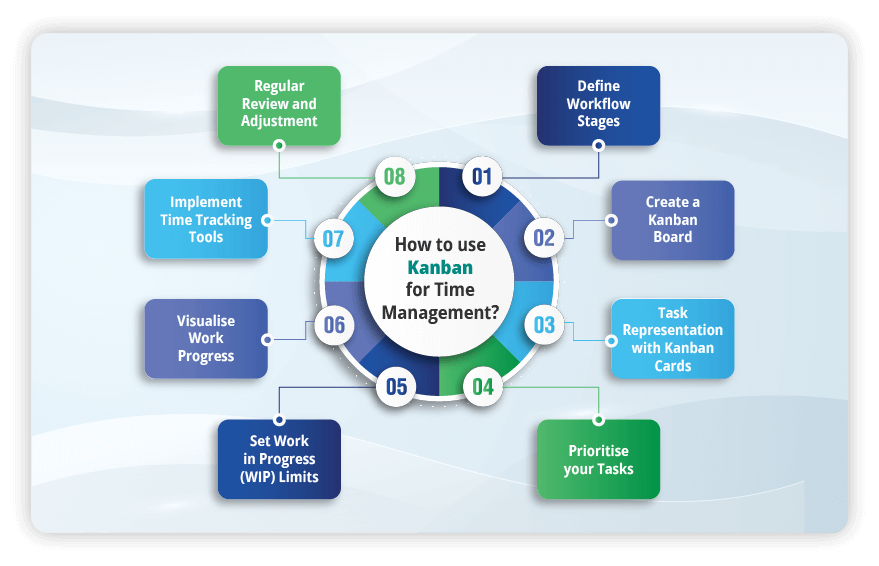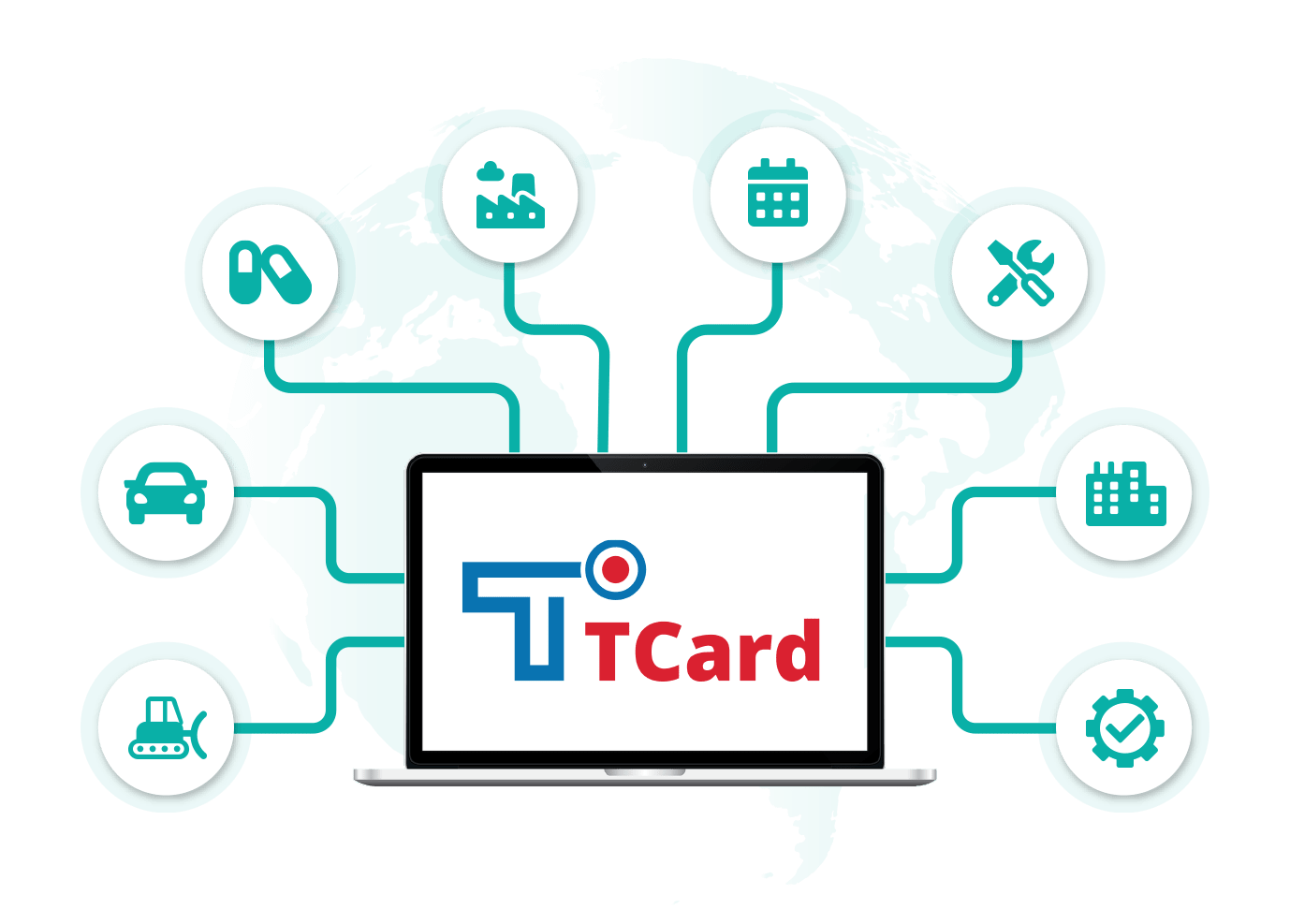Maximising Efficiency with Kanban Time Management
Kanban boards enable automatic time tracking and detailed reporting, facilitating streamlined workflow management on your shop floor.
Start Free Trial Watch VideoContents
- What is Kanban Time Management?
- Why is it important to Track Time for businesses?
- How does Kanban support Automatic Time Tracking in workflows?
- How to use Kanban for Time Management?
- Key benefits of using Kanban in your Time Management Strategies
- What role do Kanban Boards play in Scheduling?
- How does Kanban enhance Productivity Tracking compared to other methods?
- How does Kanban contribute to better employee attendance tracking and reporting?
- How can Kanban boards help in improving Time Management skills within a team?
- What advantages does Kanban offer in terms of Time Invoicing for projects?
- What advantages does Kanban Time Management bring to Project Management and Resource Allocation?
- Differences between Traditional Value Stream Mapping and Kanban approach in Value Stream Mapping
- What advantages do detailed Time Logs within Kanban offer for audits?
- How can the Automatic Time-tracking feature of Kanban Systems affect employee engagement?
- Examples of using Kanban in Time Management practices
What is Kanban Time Management?
Kanban time management is a strategic approach that leverages Kanban principles for optimising workflows and enhancing efficiency. Kanban boards help in automatic time tracking and detailed time reporting, allowing for precise recording of working hours and streamlining project workflows.This method integrates features like:
- Attendance tracking
- Employee scheduling
- Time invoicing
- Digital timesheets
- Compliance with labour regulations
Kanban Time Management contributes to fair performance evaluations and employee development by analysing work quality and task time. By implementing Kanban's time management tools, businesses achieve organisational efficiency, productivity, and overall performance improvement.
Why is it important to Track Time for businesses?
Tracking time and maintaining a time log is crucial for organisations to enhance productivity, optimise resource allocation, and meet project deadlines. It provides insights into task durations, identifies bottlenecks, and aids in efficient project planning. Organisations utilise Kanban systems for time tracking as they visually represent workflows, ensuring transparency and real-time insights into task progress. Kanban boards automate time tracking and reporting for precise work hour recording, streamlining project management and enhancing shop floor efficiency. Combining Kanban's visual approach and time management tools helps organisations achieve better time efficiency, project outcomes, and overall operational success.
How does Kanban support automatic Time Tracking in workflows?
Card timers in the Kanban system enable precise tracking of the time invested in specific tasks. As Kanban cards progress through different stages on the Kanban boards, the system automatically records timestamps, creating a seamless and accurate record of work duration. This eliminates the need for manual time entries, reducing errors and enhancing overall precision. The Kanban system consolidates timesheets, offering a centralised hub for real-time tracking and analysis. In essence, the introduction of card timers streamlines time tracking within Kanban, providing teams with a reliable tool to monitor and manage task durations efficiently.
How to use Kanban for Time Management?

- Define Workflow Stages: Begin by identifying and defining the stages of your workflow. Break down tasks into manageable steps representing work progression from initiation to completion.
- Create a Kanban Board: Establish a Kanban board with columns representing each workflow stage. Use a digital kanban system with designated areas for tasks to move through as they advance.
- Task Representation with Kanban Cards: Assign tasks to Kanban cards, detailing task descriptions, deadlines, and relevant information. Each card represents a specific task within the workflow.
- Set Work in Progress (WIP) Limits: Determine WIP limits for each stage to prevent overload and maintain a steady workflow. Work in Progress limits help avoid bottlenecks and ensure a manageable workload.
- Visualise Work Progress: As tasks move through the Kanban board, the team can easily visualise the progress of each item. The transparency aids in tracking time and understanding the status of ongoing work.
- Implement Timer in the card: Integrate timer for tracking time within the Kanban system to automatically record the duration spent on the task through different stages.
- Regular Review and Adjustment: Regularly reviews the Kanban board to assess task status and overall workflow efficiency. Make necessary adjustments based on changing priorities and feedback.
Key benefits of using Kanban in your Time Management Strategies
- Visual Workflow Management: Kanban visually represents tasks, allowing easy tracking of work progress and identifying bottlenecks.
- Real-Time Task Visibility: Instantly see the status of each task on the Kanban board, promoting transparency and aiding in effective time allocation.
- Flexible Prioritisation: Prioritise tasks based on urgency and importance, facilitating adaptive time management strategies for changing priorities.
- Work in Progress (WIP) Limits: Set WIP limits for each stage to prevent overloading and maintain a balanced workflow, ensuring efficient time allocation.
- Continuous Improvement: Regularly review and refine workflows based on insights gained from the Kanban board, leading to continuous improvement in time management.
- Reduced Multitasking: Limit Work in Progress and focus on completing tasks in progress before moving on to the next, reducing multitasking and enhancing time efficiency.
- Increased Accountability: Assign tasks on the Kanban board, promoting accountability and ensuring that each team member knows their responsibilities in managing time effectively.
What role do Kanban Boards play in Scheduling?
Kanban boards play a crucial role in schedule management by providing a visual framework to organise tasks and streamline workflows. With columns representing different process stages- To do, Doing and Done, teams can easily track and manage project timelines in real-time. The visual nature of Kanban enhances transparency, enabling teams to identify potential scheduling challenges and allocate time and resources effectively. By fostering collaboration and adaptability, Kanban boards empower teams to stay on schedule, prioritise tasks efficiently, and maintain a clear outline of project timelines, contributing to effective schedule management.
How does Kanban enhance Productivity Tracking compared to other methods?
Kanban enhances productivity tracking compared to other methods by offering a dynamic visual representation of tasks and their progress on the Kanban board. Unlike static to-do lists, Kanban allows for real-time updates, providing a clearer overview of ongoing work. The Pomodoro technique and Timeboxing focus on time management, but Kanban complements these by offering visual cues on task progression. Additionally, the Eisenhower matrix emphasises task prioritisation, a feature seamlessly integrated into Kanban's column-based workflow. With its adaptability and visual clarity, Kanban is a versatile and effective method for tracking productivity, offering a comprehensive approach beyond traditional methods.
How does Kanban contribute to better employee attendance tracking and reporting?
Kanban contributes to improved attendance tracking and reporting by providing a visual representation of task assignments on the board. Team members update their task statuses, making it easy for team managers to understand availability and track attendance effectively. With visual cues on who actively engages in tasks, managers can quickly identify team members' workloads and assign tasks based on their performance. This streamlined approach enhances attendance tracking, facilitates comprehensive reporting, and enables efficient task allocation, fostering better team collaboration and productivity.
How can Kanban boards help in improving Time Management skills within a team?
Kanban boards significantly contribute to enhancing time management skills within a team. Team members clearly understand priorities and deadlines by visualising tasks and their progress through the workflow stages. The column-based structure of Kanban facilitates systematic organisation, allowing teams to focus on completing tasks on time. The transparency provided by Kanban boards fosters accountability, as each team member can easily track their own and their colleagues' progress. This visual approach encourages effective communication and collaboration, leading to improved time management skills across the team. Overall, Kanban boards are powerful tools for making sense of structure, prioritisation, and efficiency in time management practices.
What advantages does Kanban offer in terms of Time Invoicing for projects?
Kanban supports transparent billing practices, making project time invoicing easier. The visual representation of tasks and their progress on the Kanban board allows for accurate work hours tracking. This transparency ensures that businesses can precisely account for the time spent on each task, facilitating the creation of detailed and transparent invoices. With Kanban's time invoicing feature, clients receive clear documentation of the work completed, promoting trust and accountability in billing processes. Kanban's visual clarity and real-time tracking contribute to efficient and transparent time invoicing, streamlining financial practices for project-based businesses.
What advantages does Kanban Time Management bring to Project Management and Resource Allocation?
Time reporting brings several advantages to project management and resource allocation. Firstly, it provides visibility into how team members allocate their time, enabling project managers to track progress and identify potential bottlenecks. This insight is crucial for making informed resource allocation decisions and ensuring tasks are assigned efficiently. Time reporting also aids in accurate project planning by highlighting areas where adjustments may be needed. The data derived from time reporting enhances project managers' ability to assess the team's overall performance, make strategic decisions, and optimise resource allocation for maximum efficiency and productivity.
How does Kanban analyse employee skills in terms of Time Management?
Kanban analyses work quality and task time for performance evaluations through its visual and systematic approach. By visually representing tasks on the Kanban board, teams can easily track their progress through different stages, providing a clear timeline for task completion. This visual data, combined with time-tracking features, enables teams to assess the time taken for each task. Additionally, the Kanban system allows for comments, facilitating discussions about work quality and potential improvements directly on the board. This holistic approach to tracking work quality and task time fosters a transparent and collaborative environment, contributing valuable insights for performance evaluations within the Kanban framework.
What advantages do detailed Time Logs within Kanban offer for audits?
Kanban's detailed time logs offer significant advantages for audits. Its comprehensive time-tracking features accurately record task durations, progress, and completion times. This data serves as a reliable source for audits, ensuring transparency and accuracy in assessing project timelines and resource utilisation. Kanban's ability to trace the history, changes, and time details of each task facilitates thorough audits, aiding in compliance checks and project evaluations. Detailed auditing using Kanban boards enhances credibility and provides valuable insights for continuous improvement in project management practices.
How can the Automatic Time-tracking feature of Kanban Systems affect employee engagement?
Kanban's automatic time tracking impacts employee motivation and engagement by eliminating the manual burden of timekeeping. The automated process streamlines the recording of work hours, reducing administrative tasks for employees and fostering a more efficient workflow. With precise time tracking, employees clearly understand their contributions and accomplishments, promoting a sense of achievement. Transparency in automatic time tracking also instils accountability, as team members can easily monitor their progress. This enhanced visibility and efficiency increases motivation and employee satisfaction, offering a positive work environment where individuals feel recognised and empowered in their roles.
Examples of using Kanban in Time Management practices
-
Kanban Boards in Automotive Manufacturing
- Production Line Optimisation
In an automotive manufacturing setting, Kanban boards can be used to manage the production line efficiently. Each vehicle component, from assembly to quality control, can be represented as tasks on the Kanban board. This allows teams to visually track the progress of each component, allocate resources effectively, and ensure timely completion, contributing to streamlined time management practices in the manufacturing process. - Supply Chain Coordination
Kanban boards assist in coordinating the supply chain by visualising the status of raw materials and ensuring that necessary components are available when needed. This real-time visibility aids in preventing delays and optimising the scheduling of manufacturing processes, ultimately enhancing time management across the entire automotive production cycle.
- Production Line Optimisation
- Kanban Board in a Hospital
- Medical Supply Inventory
Kanban boards help manage medical supply inventory by tracking the status of essential supplies such as medications, surgical equipment, and other consumables. This prevents shortages, enhances inventory turnover, and ensures medical staff can access necessary resources promptly, contributing to effective time management in healthcare delivery. - Staff Scheduling and Task Assignment
Kanban boards support the scheduling of medical staff and task assignments. By visualising staff availability and allocating tasks based on skill sets, hospitals can enhance workforce management, ensure timely patient care, and optimise human resources, ultimately improving overall time management practices in the healthcare environment.
- Medical Supply Inventory

